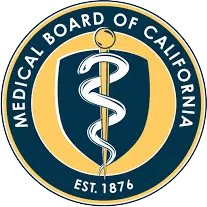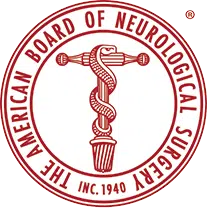Discover Advantages of Innovative Neurosurgical Treatments
Navigating the complexities of the brain and spinal conditions requires the utmost precision and care. Board-certified neurosurgeon Dr. Alex Taghva offers cutting-edge treatments that promise enhanced recovery, minimal discomfort, and improved quality of life, ensuring patients are on the best path toward healing and long-term health.
"*" indicates required fields
Neurosurgical Conditions
Cervical, Thoracic, and Lumbar Spine Disorders
The first-line treatment for many neurological disorders is physical therapy plus pain management techniques, including heat and cold, anti-inflammatory medications, and spinal injections. When these methods fail, surgery may be an option. Dr. Alex Taghva is the only neurosurgeon in Orange County offering endoscopic spine surgery and he specializes in minimally invasive outpatient procedures, allowing patients to go home soon after surgery.
Herniated Discs & Bulging Discs
Spinal discs sit between the vertebrae of the spine, providing cushioning and mobility. A herniated disc occurs when the outer part of the disc develops a crack or tear, allowing the soft center (nucleus) to push through and irritate the spinal nerves. A bulging disc is less severe, but can still cause pain and interfere with daily living.
Both traditional and minimally invasive spine surgery often involves techniques to relieve pressure on the spinal nerves or spinal cord. While some herniated and bulging discs can be resolved without surgery, others may require a minimally invasive surgical procedure, such as discectomy or microdiscectomy, laminotomy, anterior lumbar interbody fusion (ALIF), posterior lumbar fusion (PLIF, TLIF), or total disc replacement.
Low Back Pain and Neck Pain
Back and/or neck pain is often caused by a herniated or bulging disc in the cervical, thoracic, or lumbar spine, degenerative disc disease, or spinal stenosis. Generally, surgery is considered only when other treatments have failed. Some patients benefit from discectomy, fusion, spinal cord stimulation, or other neurosurgical care.
Nerve Pain
Many spine disorders cause nerve pain because a damaged disc, bone spurs, or narrowing of the spinal canal reduces the space available for the nerves in the spinal column. Frequently, Dr. Taghva can treat nerve pain with surgical techniques such as spinal cord stimulation, foraminotomy, laminotomy, or spinal fusion.
Call today to schedule your consultation
Sciatica
Sciatica describes pain from compression of the sciatic nerve, which runs from the lower spine, through the buttock, and down the leg. Leg pain is a telltale sign of this common spine condition. The compression and irritation of the sciatic nerve are often caused by a herniated disc in the lumbar spine. Neurosurgical procedures like foraminotomy, discectomy, laminectomy, posterior lumbar fusion (PLF, TLIF), anterior lumbar interbody fusion (ALIF), disc replacement, and other lumbar spine surgeries may be recommended to treat the condition if it does not resolve with nonsurgical intervention.
Spinal Stenosis
Over time, the spinal canal can gradually become narrower, a condition that is known as spinal stenosis. Bone spur formation, bulging discs, thickened tissues, and injury can all contribute to stenosis, which eventually compresses the spinal nerves and causes a range of symptoms which can include pain, tingling, numbness, and weakness.
Treating spinal stenosis involves decompressing the spinal canal and relieving pressure on the nerves. This is often best accomplished with minimally invasive surgery such as a laminotomy, foraminotomy, or posterior lumbar fusion (PLF, TLIF).
Spondylosis
A common symptom of aging, spondylosis describes degeneration in the spine and may affect any region. With age, the discs become drier, harder, and flatter, losing some of their ability to cushion the vertebrae of the spine. Spondylosis is often known as osteoarthritis or degenerative disc disease.
Degenerative disc disease patients may have pain, bone spurs, bulging or herniated disks, vertebral compression fractures, reduced mobility, and poor function of the facet joints. Treatment varies depending on the region causing symptoms and the issues that the spondylosis is causing. Many problems can be fixed with minimally invasive spine surgery in Orange County.
Spondylolisthesis
Occurring in the lower back, spondylolisthesis is the slippage of a vertebra onto the bone beneath it. People of all ages can develop spondylolisthesis from a variety of causes, including birth defects, injuries, fractured vertebra, overstretching, and rapid growth.
Symptoms of spondylolisthesis include lower back pain, thigh pain, lower back and leg stiffness, and tight buttock or hamstring muscles. First-line treatment is usually nonsurgical and may include physical therapy, a back brace, pain medication, or steroid injections. Spinal fusion may be necessary if these treatments are unsuccessful.
Testimonials
Failed Back Surgery Syndrome (Post Laminectomy Syndrome)
Sometimes a patient undergoes a laminectomy or spinal fusion, pain and mobility issues persist, which is a condition known as “Failed Back Surgery Syndrome.” In these cases, Dr. Taghva may perform spinal cord stimulation (SCS) or a revision complex back procedure to help patients finally find relief.
Failed Neck Surgery Syndrome
Similar to Failed Back Surgery Syndrome, Failed Neck Surgery Syndrome occurs when surgery performed on the cervical (upper or neck) spine does not relieve the patient’s symptoms or the symptoms return. Dr. Taghva carefully evaluates each patient seeking revision surgery to determine the best course of treatment to relieve the patient’s symptoms while minimizing further surgical intervention.
Scoliosis
Scoliosis describes an abnormal curve of the spinal column. There are two main types of scoliosis: juvenile and adult. Juvenile scoliosis, or adolescent idiopathic scoliosis, typically occurs just before puberty, during a growth spurt. Adult or degenerative scoliosis can have different causes, including arthritis and spinal injury.
In mild cases of scoliosis, physical therapy may be all that is necessary to treat the condition. More severe cases will require the use of a brace or surgery to decompress the spine. Sometimes, the placement of rods and screws can be avoided with minimally invasive surgical techniques like posterior lumbar fusion (PLF, TLIF).
Spinal Trauma and Spinal Cord Injuries
Trauma to the spine and spinal cord injuries can lead to pain, weakness, numbness, tingling, and other long-term effects. Spinal disorder treatment options vary due to the wide variety of spinal injuries, but one common way to address the pain is ablative surgery. During the procedure, a heated probe creates controlled lesions to control chronic pain. Spinal cord stimulation (SCS) may also be an option.
Tumors of the Spine
Tumors can occur nearly anywhere on the body. Their location and size will have an influence on the surgical options. Dr. Taghva may request additional imaging and tests in order to create a plan for surgery. In some cases, minimally invasive techniques may be an option.
Lumbar Spine Surgery
Low back pain is extremely common and herniated or bulging discs are most likely to occur in the lumbar (lower) spine. Dr. Taghva offers many different minimally invasive surgeries for the lower back, including laminotomy, foraminotomy, anterior lumbar interbody fusion (ALIF), posterior lumbar fusion (PLF, TLIF), spinal fusion and deformity correction, total disc replacement, and discectomy. Depending on the patient’s situation, Dr. Taghva may suggest one or a combination of different minimally invasive surgical techniques to treat lumbar spine problems.
Are you ready to meet a leading Orange County Neurosurgeon?
Pain and Peripheral Nerve Disorders
Living with chronic pain significantly impacts a person’s quality of life. Nerve pain, in particular, can be extremely intense and can make it difficult to manage basic daily tasks. Dr. Taghva works with each patient to understand the source of their pain and find ways to reduce it without relying on medications that may cause side effects or dependency.
Complex Regional Pain Syndrome (Reflex Sympathetic Dystrophy)
CRPS is thought to arise from nervous system dysfunctions that manifest as an overabundance of nerve impulses directed toward a specific part of the body. This condition can lead to pain, redness, warmth, and swelling. Over time, the pain tends to intensify and becomes a burning sensation. Additionally, the area may experience joint swelling, stiffness, reduced mobility, and noticeable alterations in the skin and hair. CRPS is most frequently observed in younger adults.
Nerve blocks and spinal cord stimulation (SCS) are sometimes effective in treating CRPS pain. Dr. Taghva offers several treatment options.
Trigeminal Neuralgia
Trigeminal neuralgia is a severe facial pain that many patients describe as feeling like an electric bolt intermittently stabbing them in the face. There is usually no warning for when the pain will occur and it is typically a chronic condition.
Dr. Taghva often treats this condition with microvascular decompression, which involves exposing the trigeminal nerve root and moving blood vessels that are pinching or compressing the nerve. After surgery, the nerve should have a chance to recover and patients should find relief.
Brain Disorders
A brain disorder is among the most challenging medical condition to treat. Only skilled neurosurgeons like Dr. Taghva have the experience and knowledge to successfully treat complex brain disorders or manage symptoms.
Parkinson’s Disease
A degenerative and progressive condition, Parkinson’s is a neurological disease that makes it more and more difficult to control one’s body movements and can also cause cognitive impairment. Tremors and rigidity, along with slowed movements, are hallmark symptoms.
Along with medication, innovative surgical treatments like deep brain stimulation (DBS) can help patients with this neurodegenerative disorder manage their symptoms. Dr. Taghva has extensive experience in treating this complex condition.
Essential Tremor
Although Essential Tremor, which causes shaking in the body (often starting with the hands), does not typically affect a person’s overall ability to participate in normal activities, the condition can be embarrassing and make it difficult to write, drink from a cup, or perform other actions requiring steadiness.
Essential Tremor patients may benefit from deep brain stimulation (DBS), a procedure that can help relieve tremors in patients with a variety of conditions.
Brain Tumors
Brain tumors, including meningioma, glioblastoma, and metastatic tumors, are devastating diagnoses. Depending on the type and size of the tumor, surgical removal may be an option. Patients may need radiation or additional treatments with Dr. Taghva or other specialists to improve the chances of successful treatment.
Tumors of the Pituitary Gland
Pituitary gland tumors interfere with hormone secretion and can create larger problems if left untreated. Using tiny instruments and cameras, Dr. Taghva approaches the tumors through the nostrils, removing them using minimally invasive techniques.
Hematomas (Bleeding) Within the Brain
Acute hematomas are extremely dangerous while smaller hematomas may be observed before surgical intervention is needed. Dr. Taghva may use several different surgical techniques to treat hematomas and relieve pressure on the brain.

Why Choose Dr. Alexander Taghva
Dr. Alexander Taghva is a leading board-certified neurosurgeon, specializing in brain surgery, endoscopic spine surgery, as well as spine disorders. Also, he is the only spine surgeon in Orange County and southern California who offers endoscopic laminotomy surgery. Dr. Taghva:
- Graduated from John Hopkins University School of Medicine and completed his residency at the University of California
- Completed a prestigious fellowship at The Ohio State University in Neuromodulation and Functional Neurosurgery
- Specializes in minimally invasive and endoscopic surgery, spinal stenosis, artificial disc replacement, spinal disorders, spinal surgery revision, and other spinal conditions.
- Specializes in brain surgery to treat trigeminal neuralgia, brain tumors, pituitary tumors, and Parkinson’s disease.
- A highly-respected neurosurgeon with many years of experience, including treating chronic pain via stimulation of the spinal cord and brain
- Actively involved in medical research and the lead investigator for clinical trials on spinal cord stimulation





